Mamit Lake (sometimes spelled Mamette) is a medium-sized lake 12 km from our home in Logan Lake. It is surrounded by private ranchlands so access to the water is limited. From a boat launch next to Highway 97C we’ve been taking small kayaks to explore the lake. This is especially rewarding in late summer when the extensive mudflats attract many shorebirds migrating south after their northern or Arctic breeding seasons. The lake also supports many breeding waterfowl and is a popular fishing ground for American White Pelicans. Here are some photos from several paddling expeditions around Mamit Lake – 8.7 km around the shoreline according to my GPS.
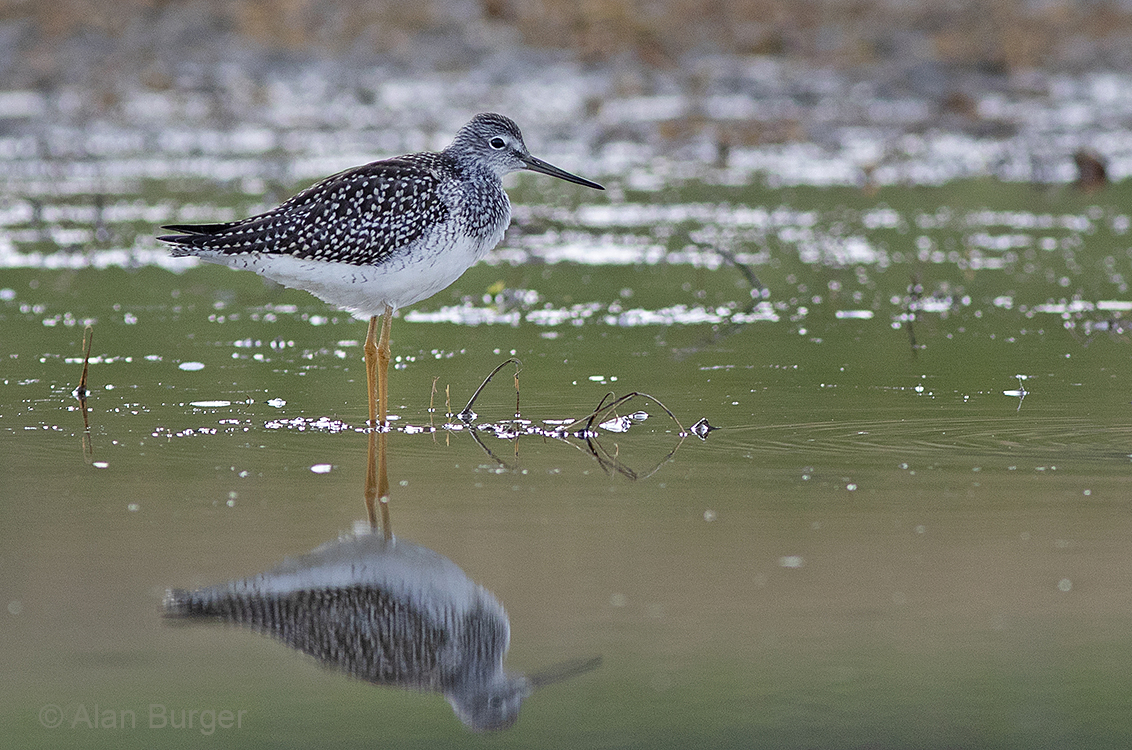
Greater Yellowlegs – in August there are regularly 15-25 of these large shorebirds around Mamit Lake. ©Alan Burger

Greater Yellowlegs. © Alan Burger
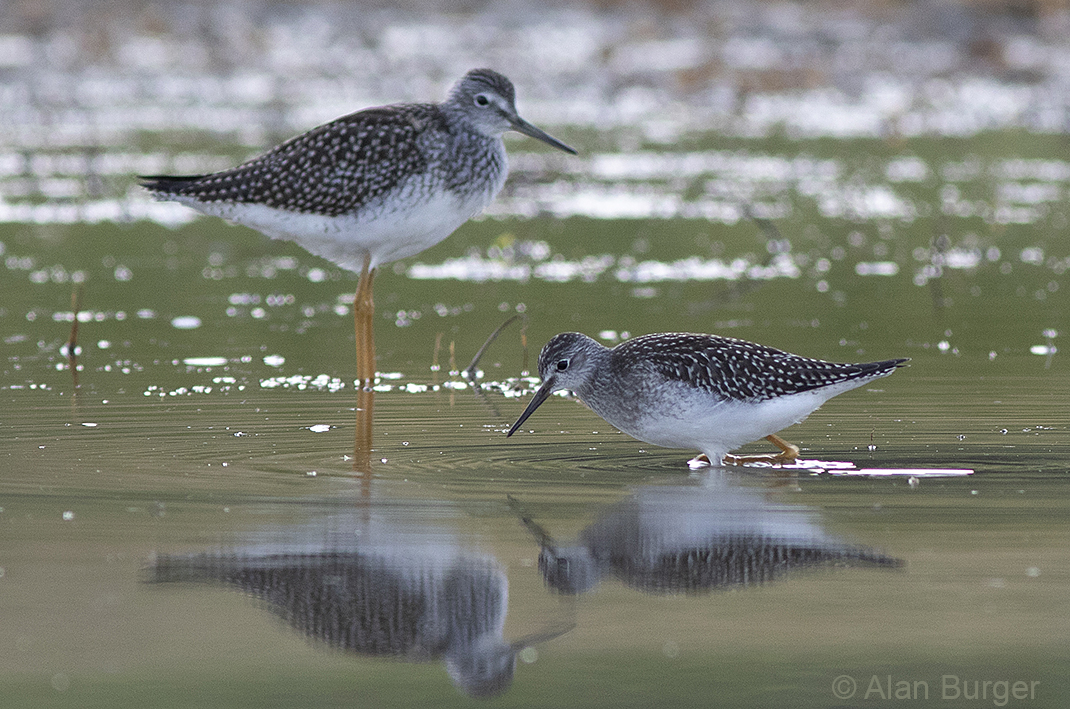
Greater (back) and Lesser (front) Yellowlegs. When they are together like this they are easy to separate, but when alone identification is difficult. ©Alan Burger
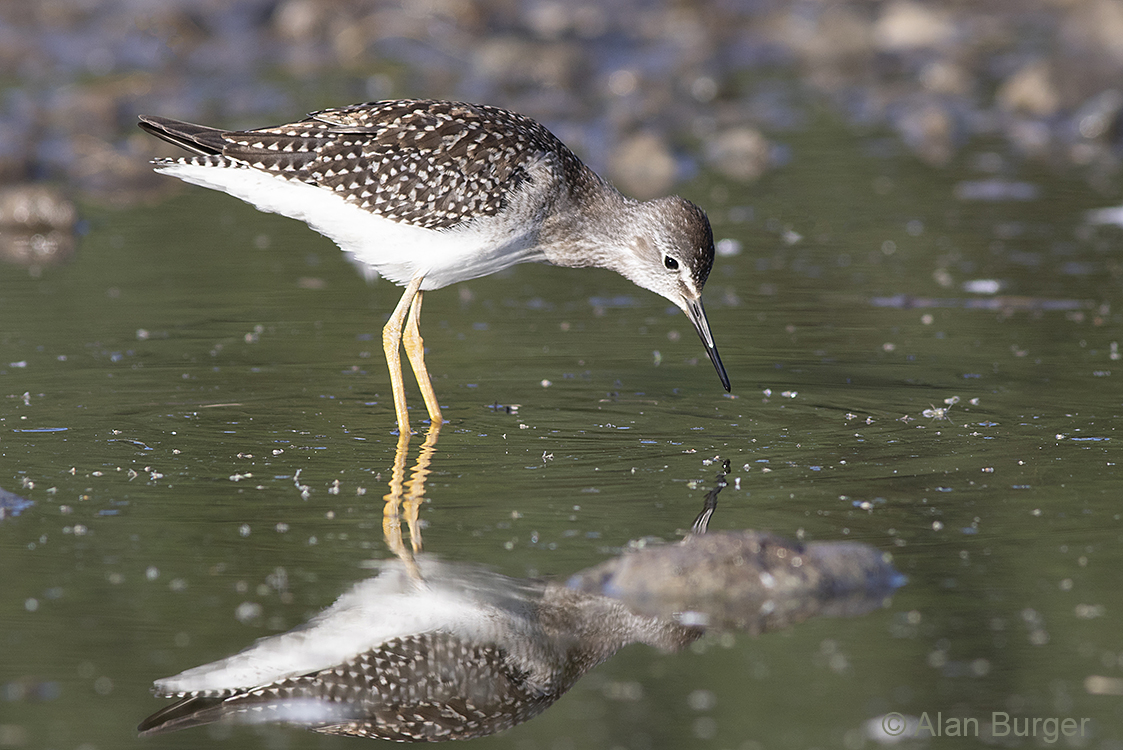
Lesser Yellowlegs. © Alan Burger
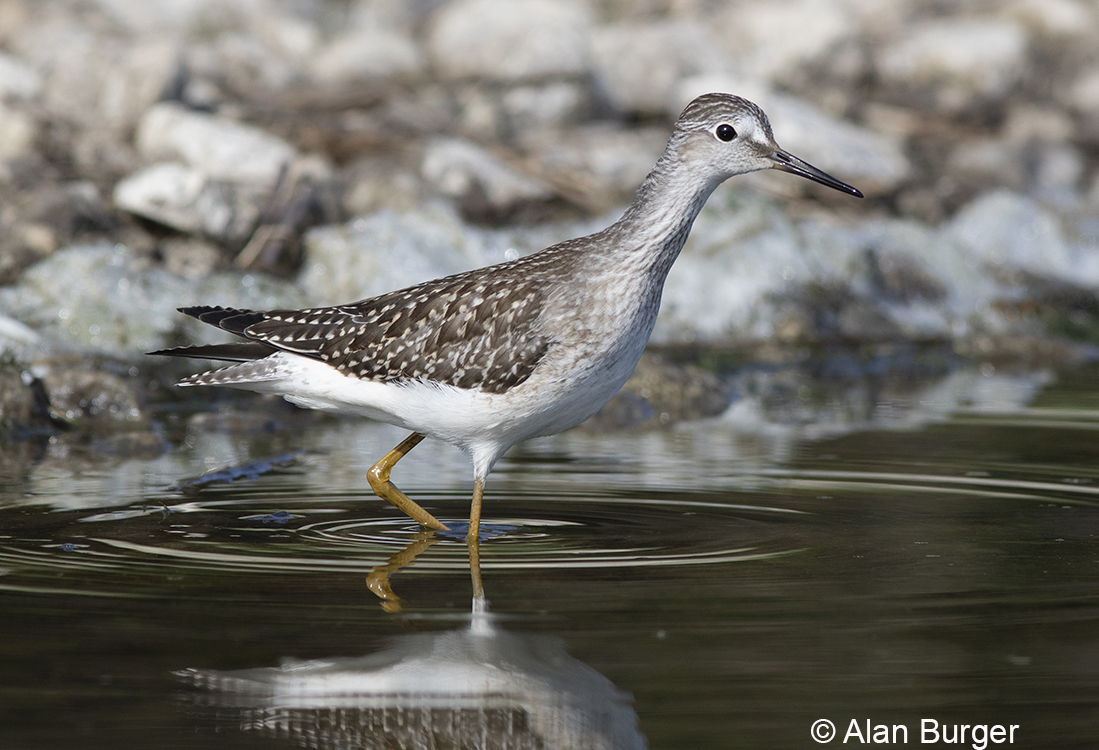
Lesser Yellowlegs foraging in the shallows of Mamit Lake. © Alan Burger
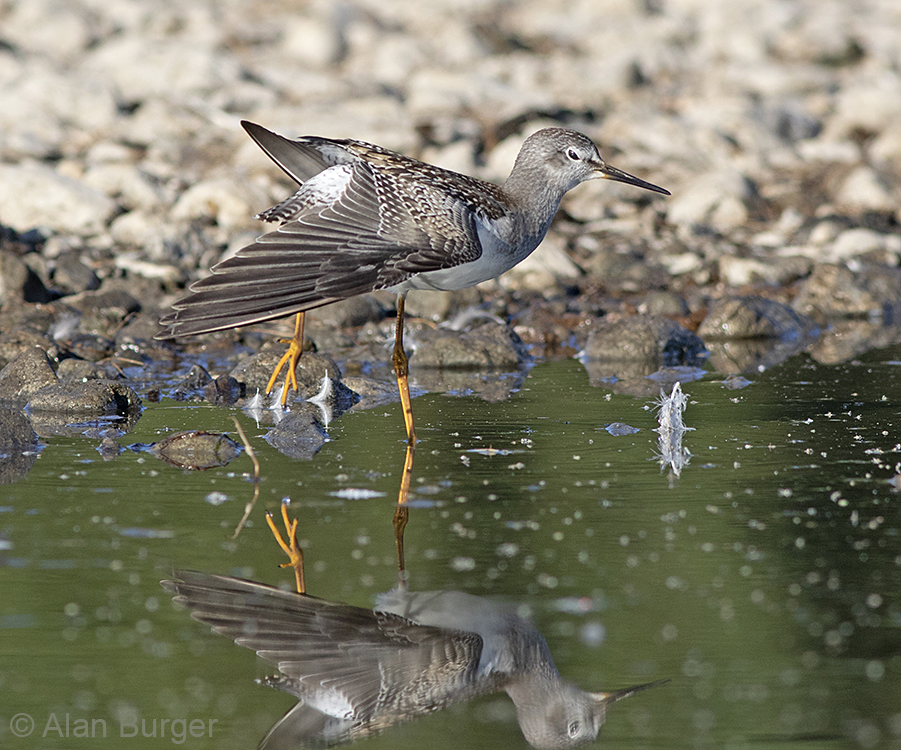
Lesser Yellowlegs doing some stretches. © Alan Burger
Small sandpipers (“Peeps”) are the most common late-summer shorebirds on Mamit Lake. The vast majority are Least Sandpipers, but if one looks carefully there are sometimes other species mixed in – Western Sandpipers and Semi-palmated Sandpipers.
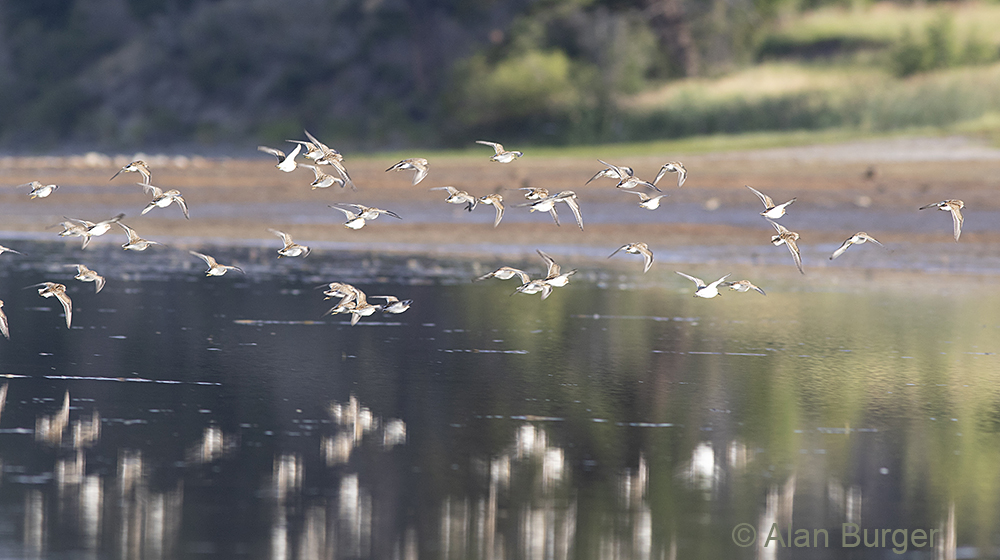
A flock of Peeps circling the mudflats at Mamit Lake. © Alan Burger
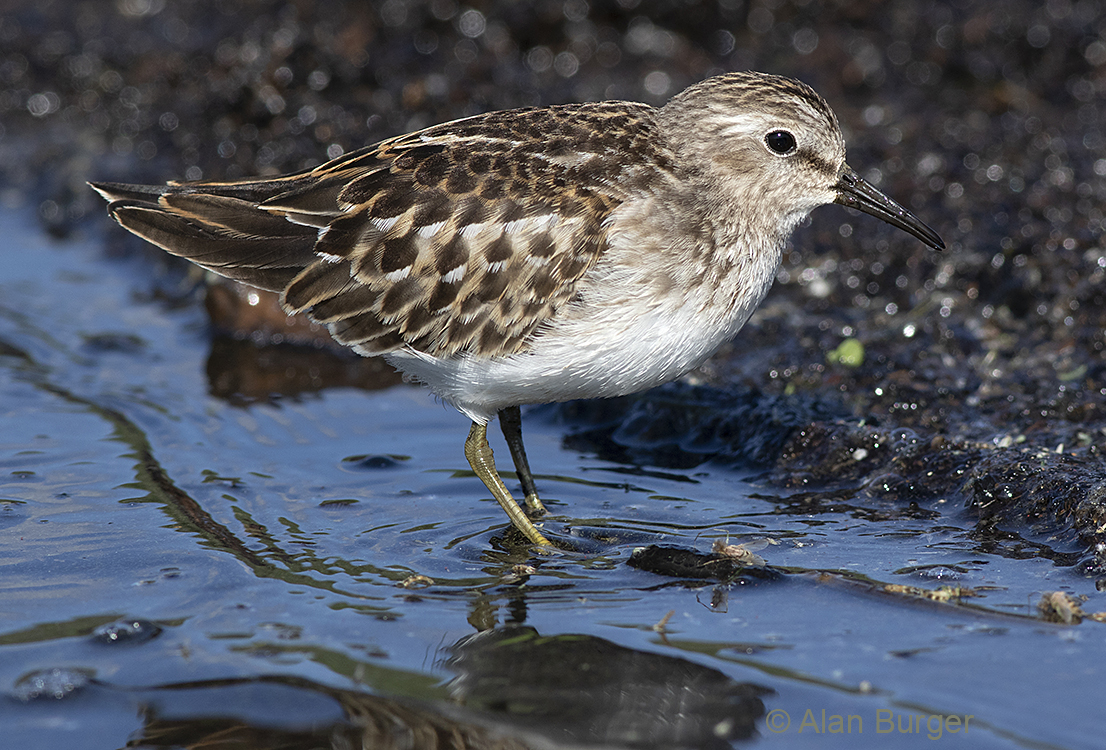
Least Sandpiper – the most common shorebird on Mamit Lake in late summer. © Alan Burger
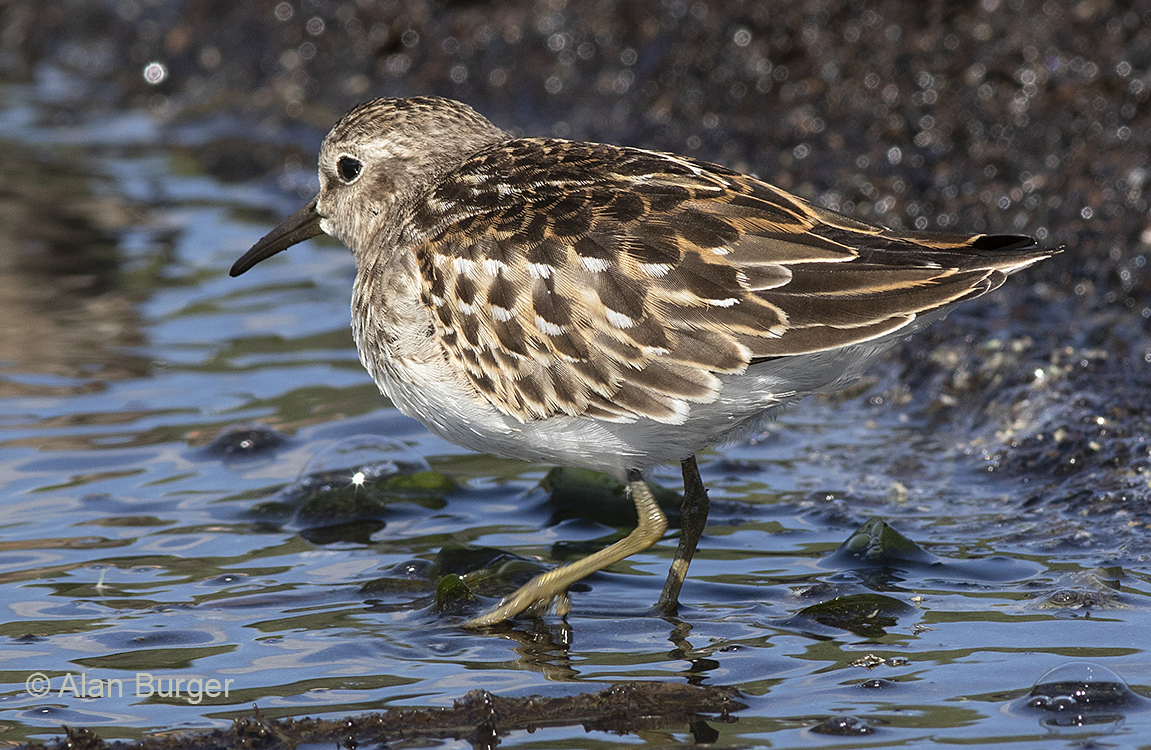
A Least Sandpiper – a juvenile bird with fresh plumage. © Alan Burger
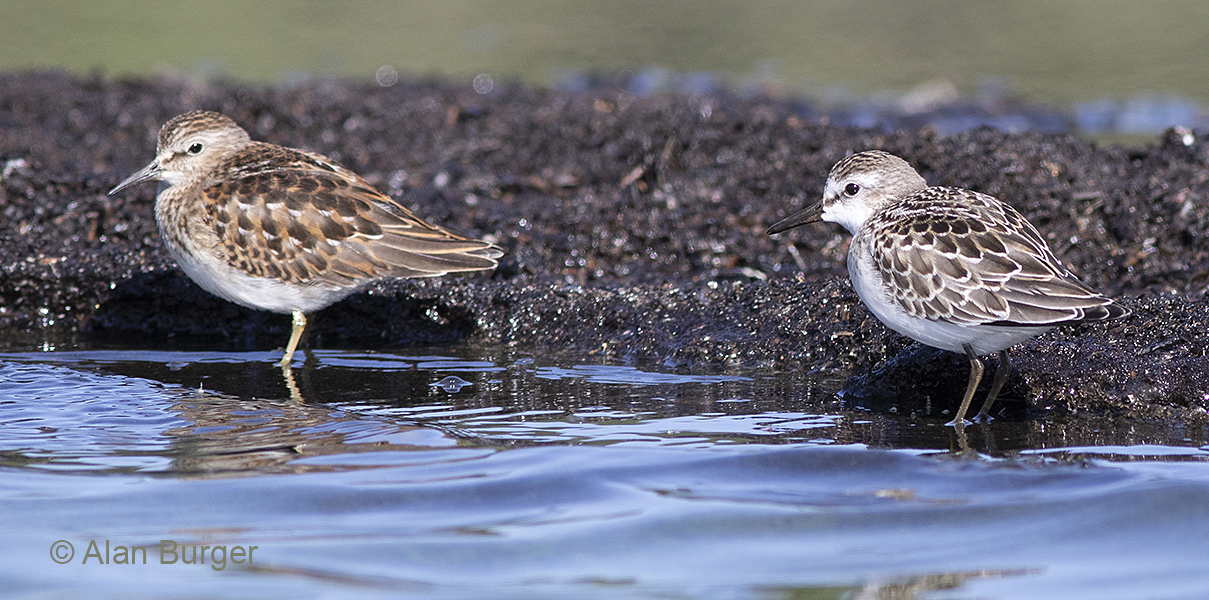
Compare the Peeps: Least Sandpiper on the left, Semi-palmated Sandpiper on the right. Note the difference in leg colour and the stubby beak of the Semi-palmated – both diagnostic features. Mamit Lake 13 August 2020. © Alan Burger
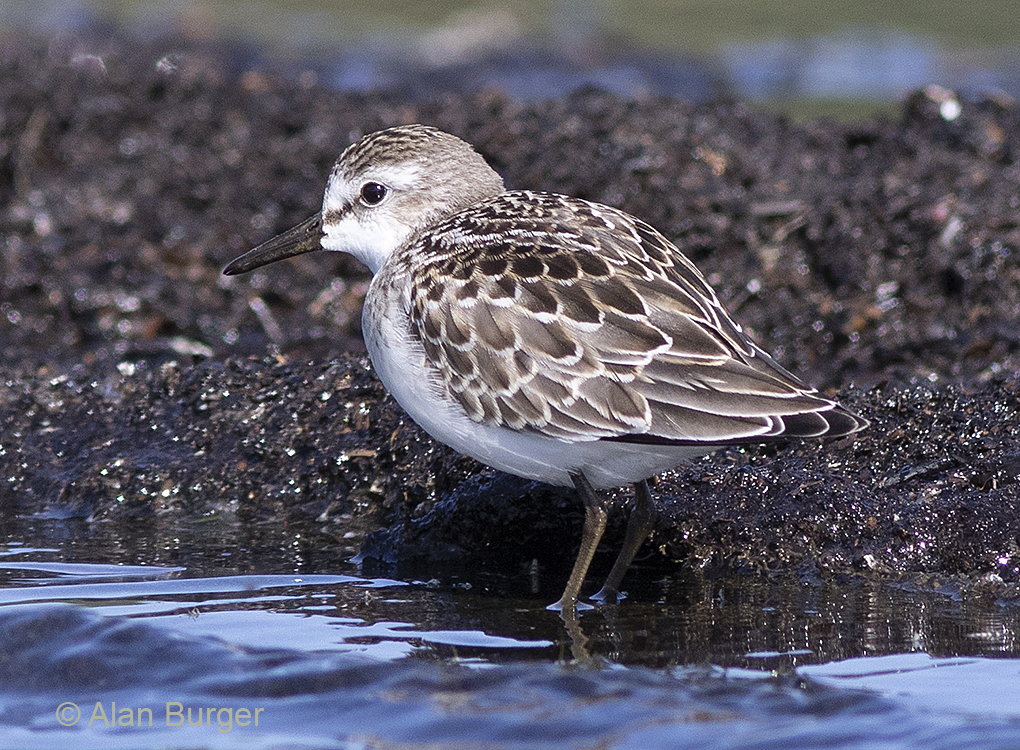
Semi-palmated Sandpiper – a juvenile with white-trimmed feathers. © Alan Burger
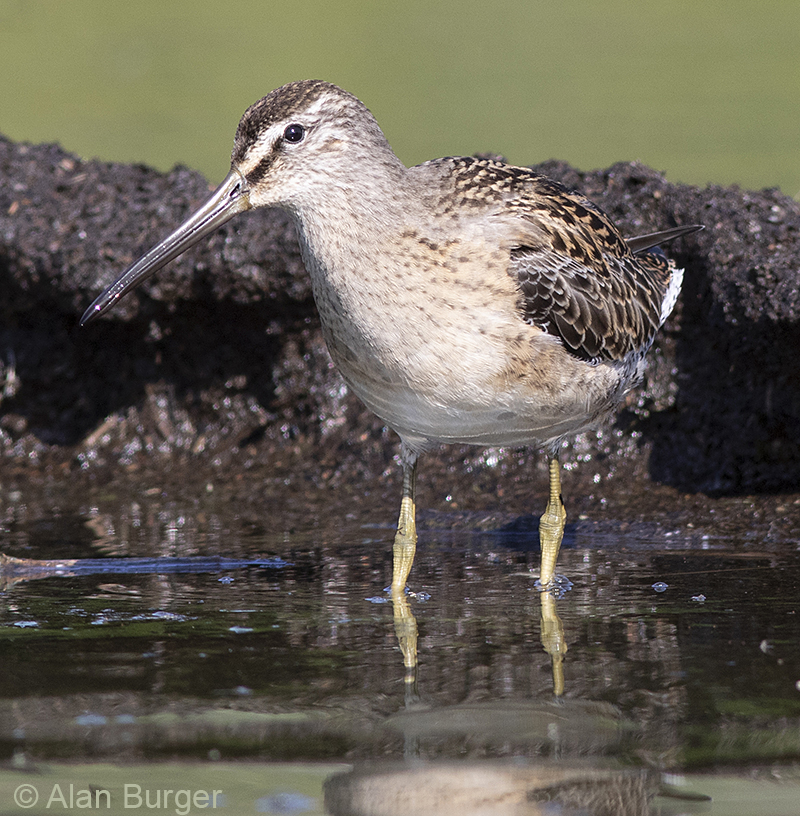
Long-billed Dowitcher. This large shorebird often migrates through the B.C. interior, whereas the very similar Short-billed Dowitcher is along the ocean coast. © Alan Burger
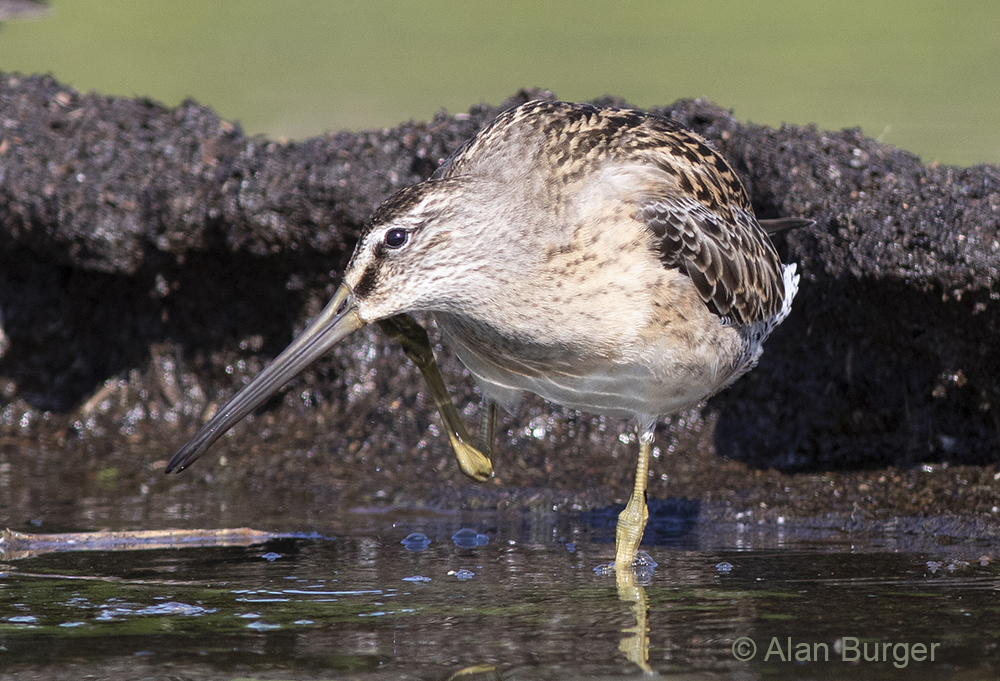
Scratching an itch – Long-billed Dowitcher, Mamit Lake 13 August 2020. © Alan Burger
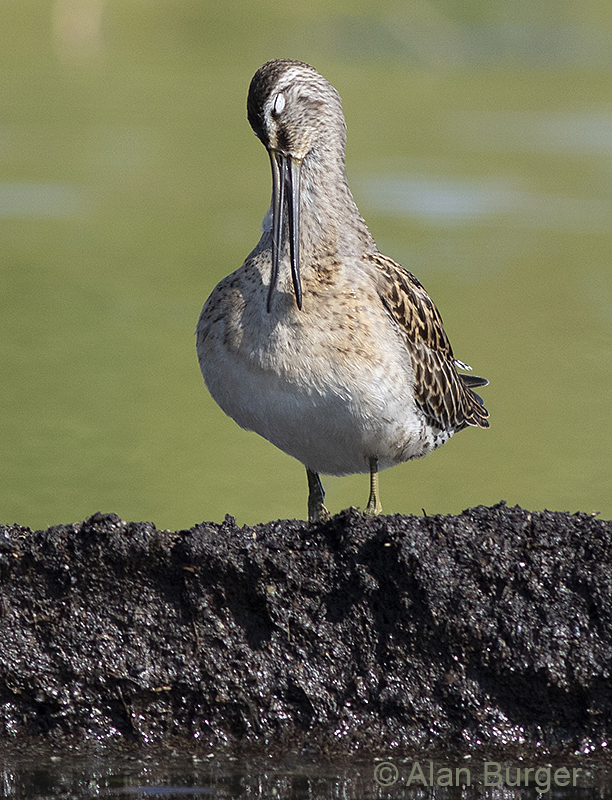
Long-billed Dowitcher. It takes some skill to preen breast feathers with a bill as long as this. © Alan Burger
Only two species of shorebird breed on Mamit Lake – Killdeer and Spotted Sandpiper.
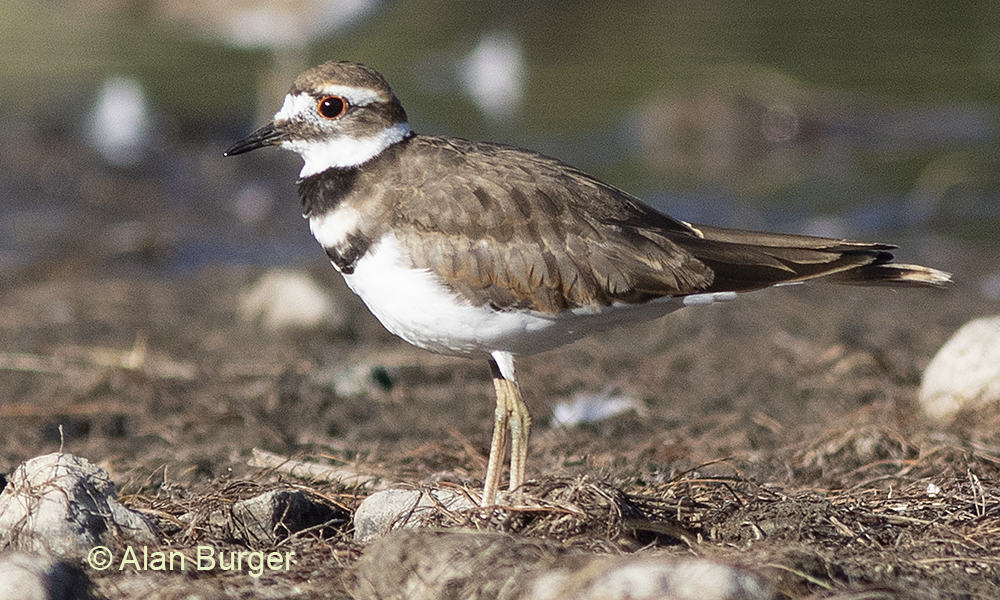
Killdeer – this plover species breeds along the lake edges, foraging mostly on the upper mudflats and grassy verges. © Alan Burger
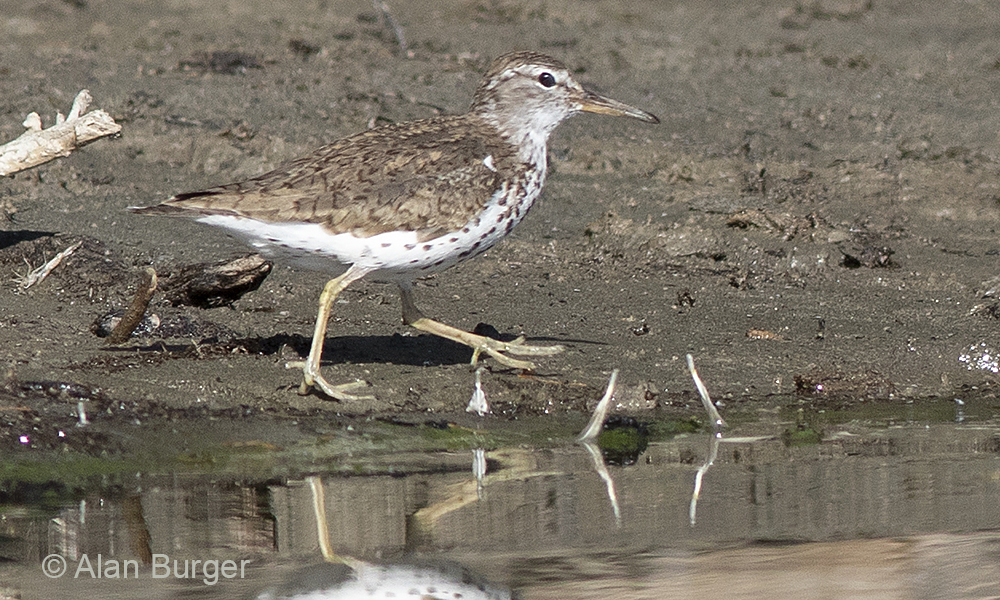
Spotted Sandpipers are a common breeding species on Mamit Lake – there are likely 10 or more pairs scattered around the shoreline. © Alan Burger
Perhaps the most interesting shorebirds to show up on Mamit Lake are phalaropes. These shorebirds generally feed by swimming, and as a result have evolved unique lobed toes. In our area they also tend to feed along the muddy edges of the lake, just like most other shorebirds. Wilson’s Phalaropes breed within southern and central B.C., but Red-necked Phalaropes breed further north, going up into the high Arctic tundra. So far only juvenile phalaropes have turned up on Mamit Lake.
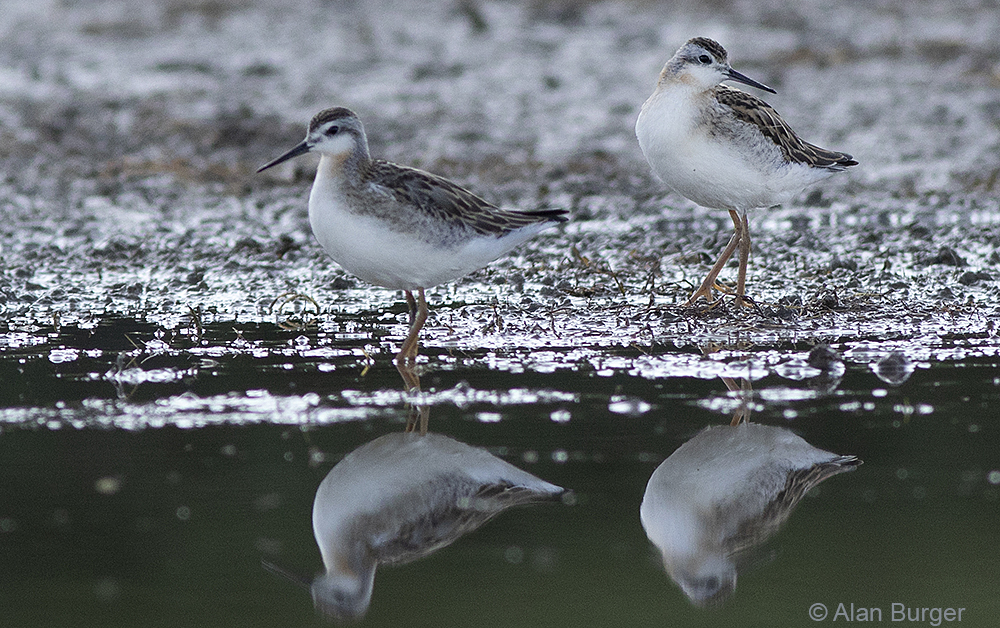
A couple of juvenile Wilson’s Phalaropes. Very narrow, long bills and yellowish legs distinguish this species. © Alan Burger
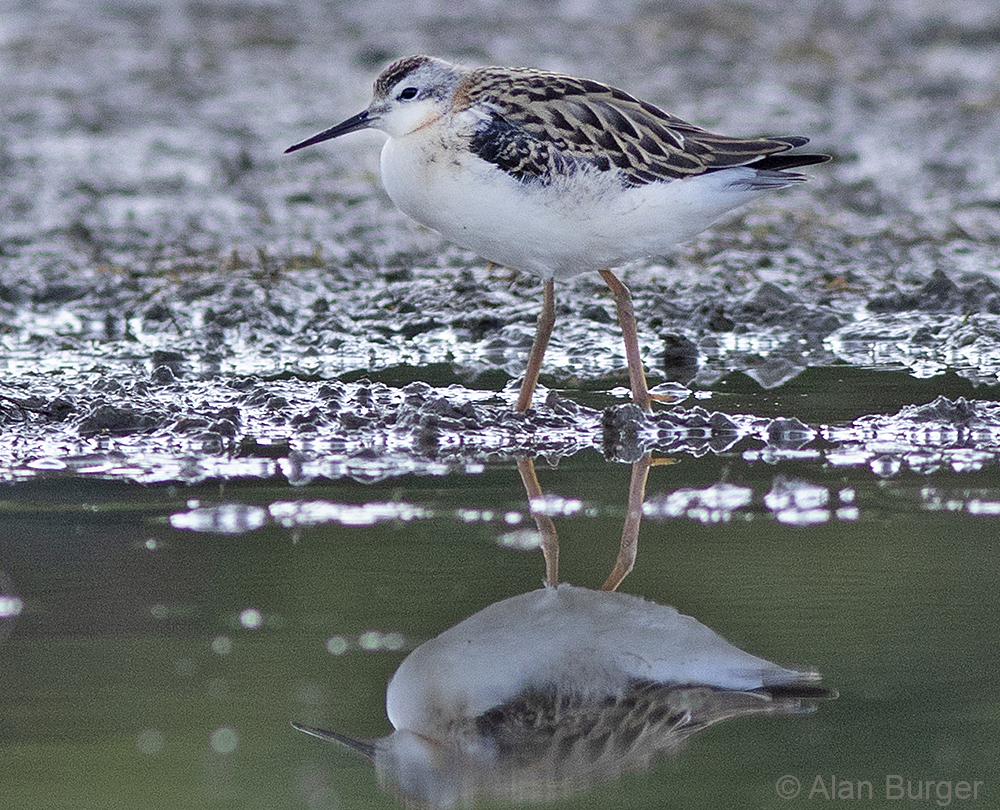
Wilson’s Phalarope – juvenile. © Alan Burger
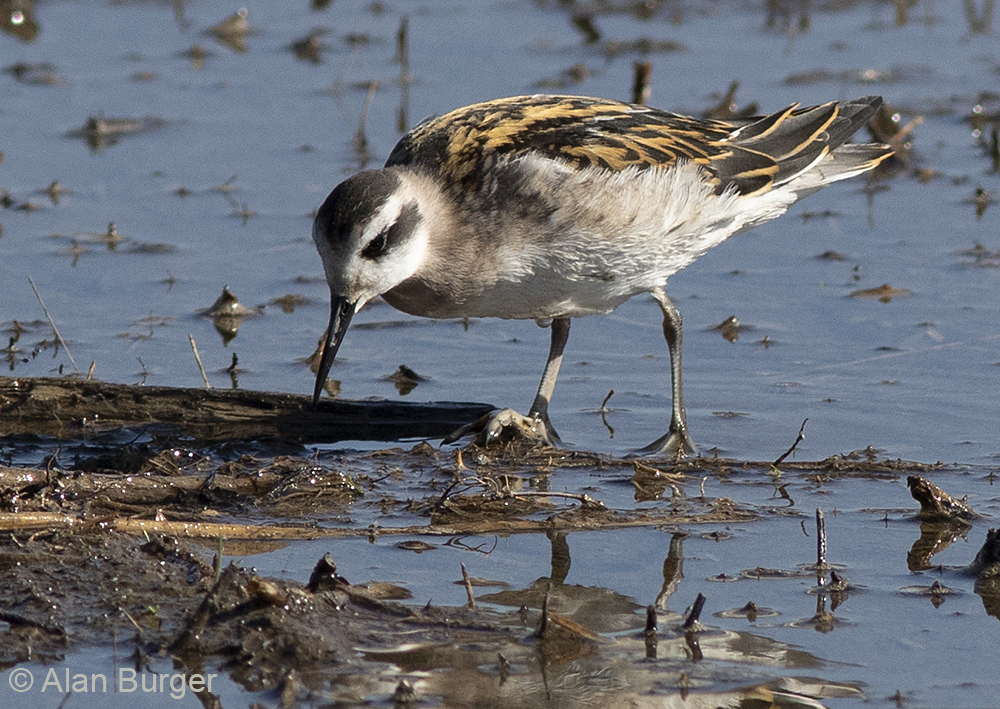
I was excited to find this Red-necked Phalarope on the lake on 5 August 2020. Notice the lobed toes. This species mostly migrates along coastal waters but a few travel inland. © Alan Burger
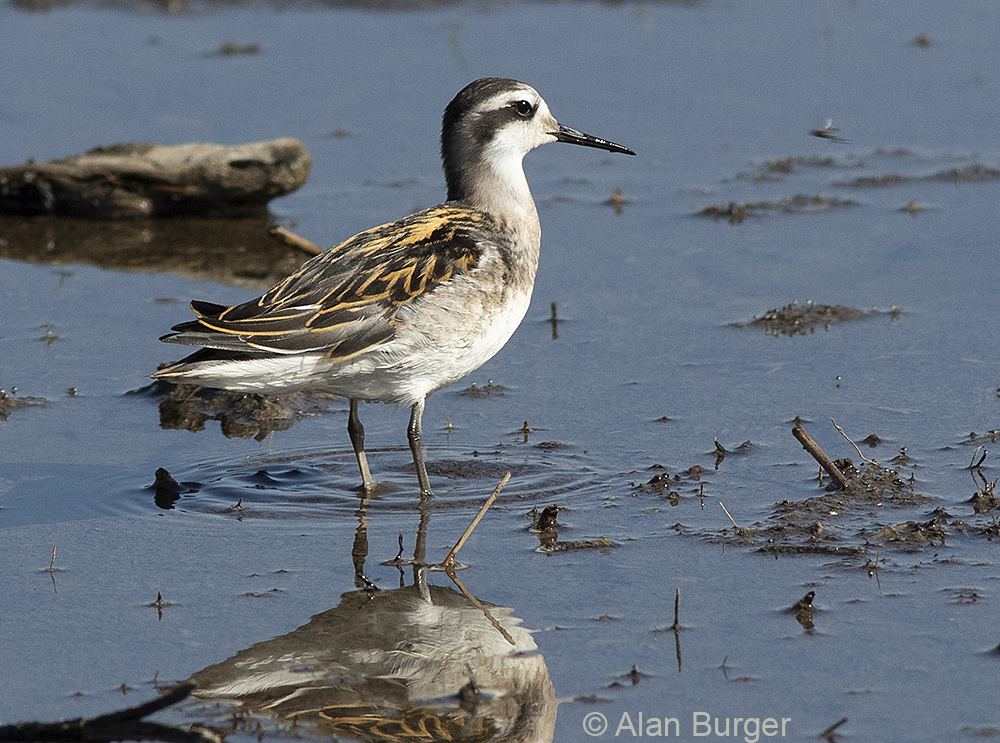
Red-necked Phalarope – juvenile. © Alan Burger
Gulls are relatively rare on Mamit Lake. None breed here and a few pass by en route to other areas. On 4-5 August there were a few gulls present.
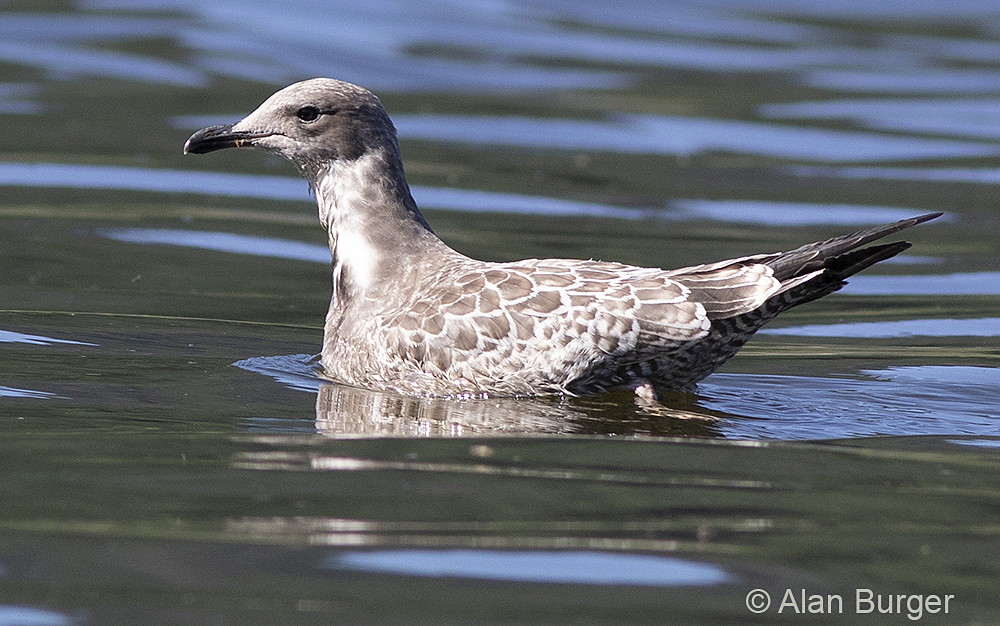
A juvenile California Gull, probably moving from a distant breeding colony. © Alan Burger
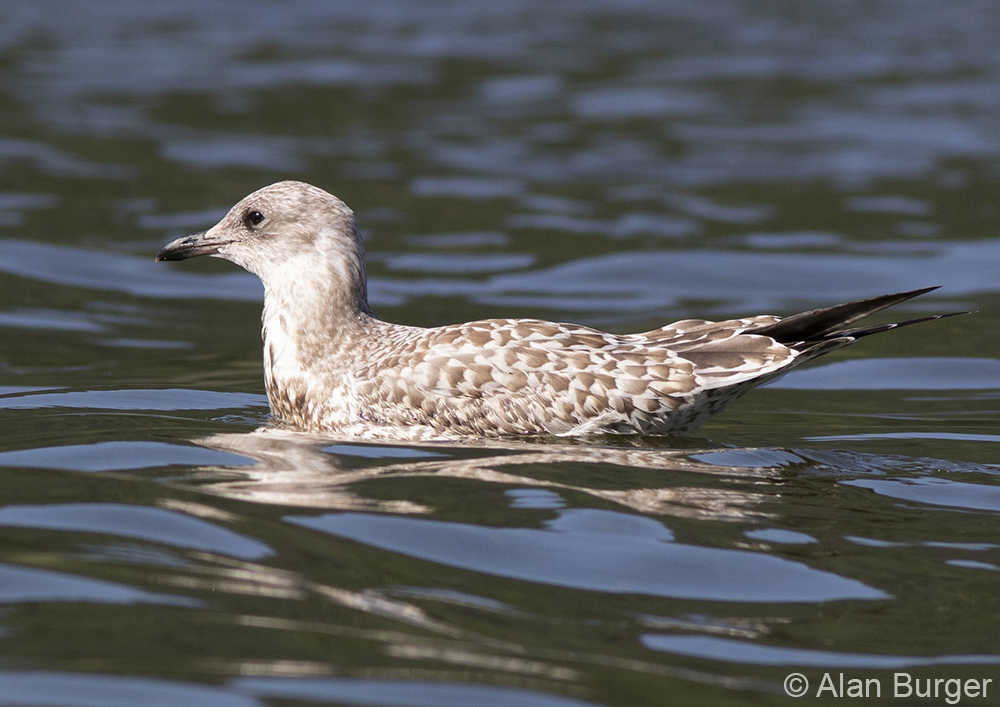
Juvenile Ring-billed Gull. There are several breeding colonies of this species in southern B.C. – the nearest is probably at Salmon Arm. © Alan Burger
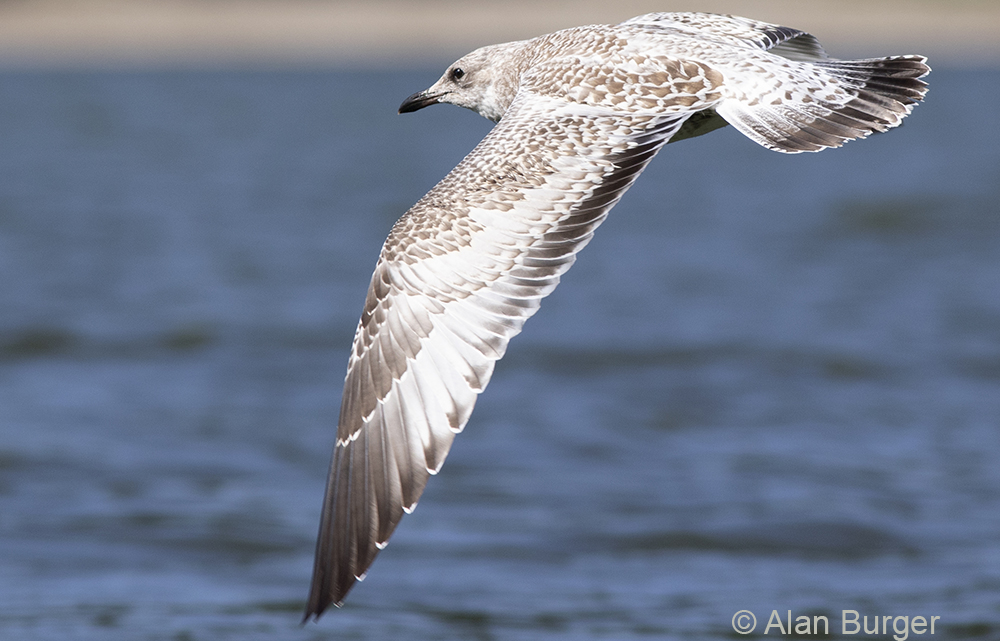
Juvenile Ring-billed Gull. © Alan Burger
It is not just birds that are of interest here. We often see Mule Deer along the shore and Yellow Pine Chipmunks are common, often coming right down to the water’s edge.
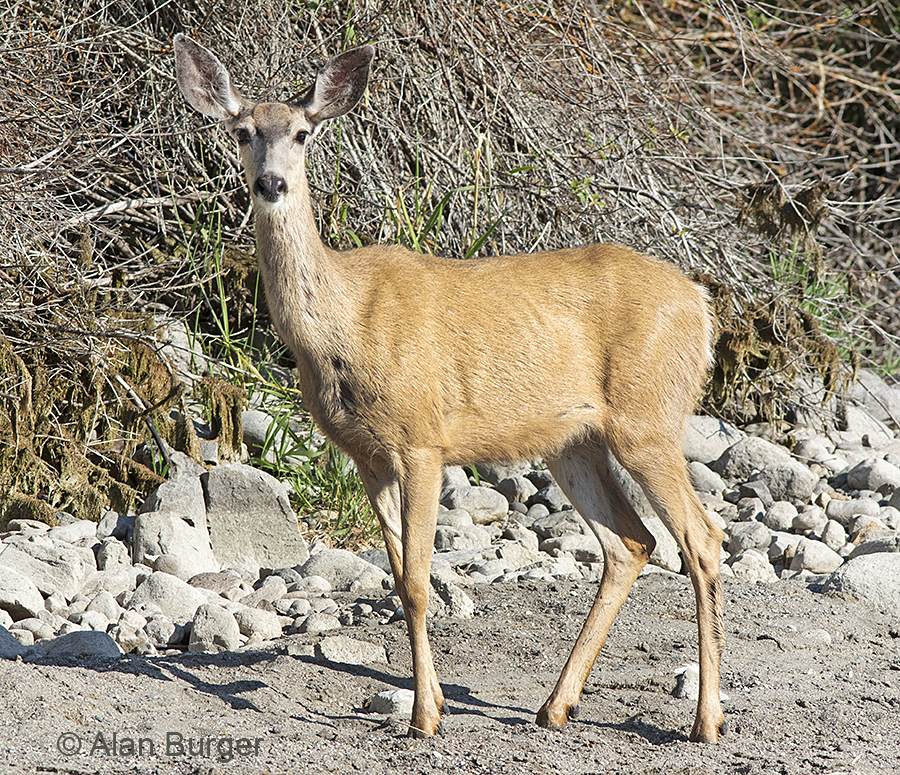
A Mule Deer doe – quite curious about my kayak and flashing paddles. © Alan Burger
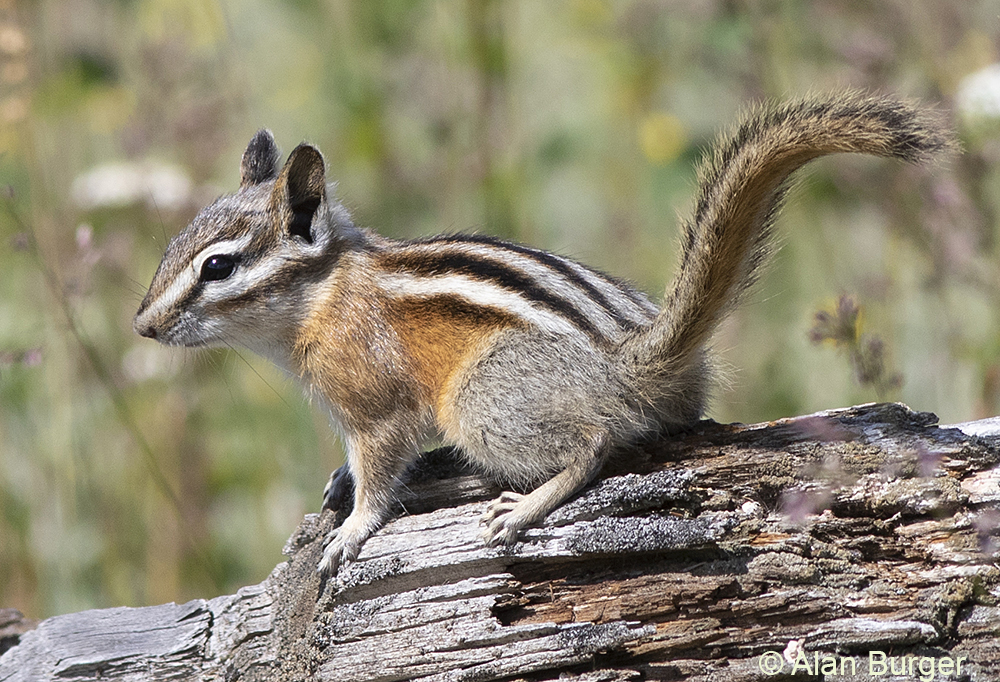
Yellow Pine Chipmunk. These little critters are common around the shoreline of the lake. © Alan Burger
And, of course, there are hundreds of ducks and geese, although I’ve been focused mainly on the shorebirds during my visits.
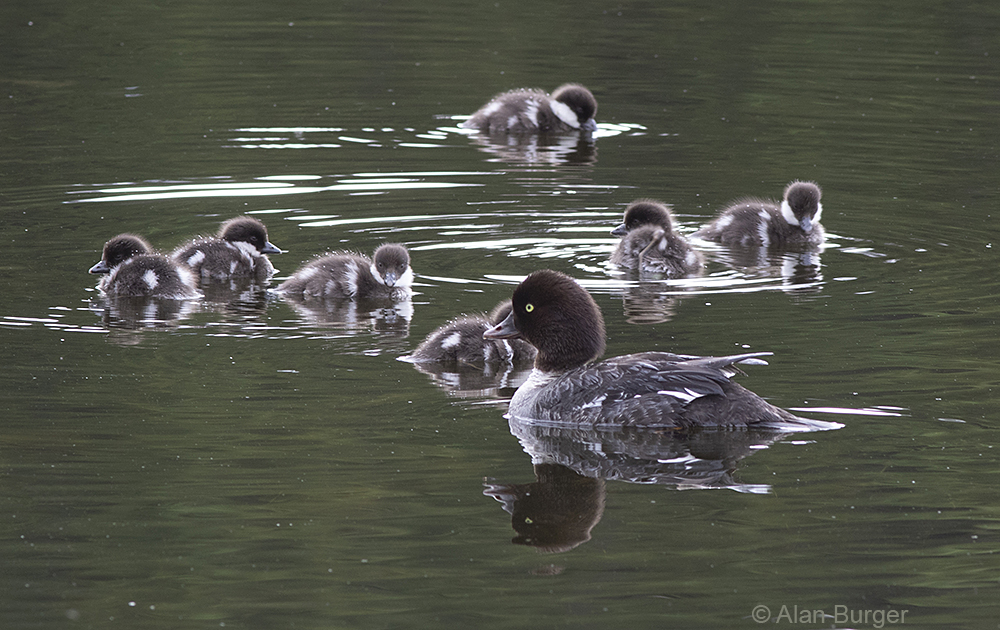
In August one can find 4-5 broods of Barrow’s Goldeneyes on Mamit Lake. I took this photo earlier in the year (27 June) at Logan Lake. © Alan Burger
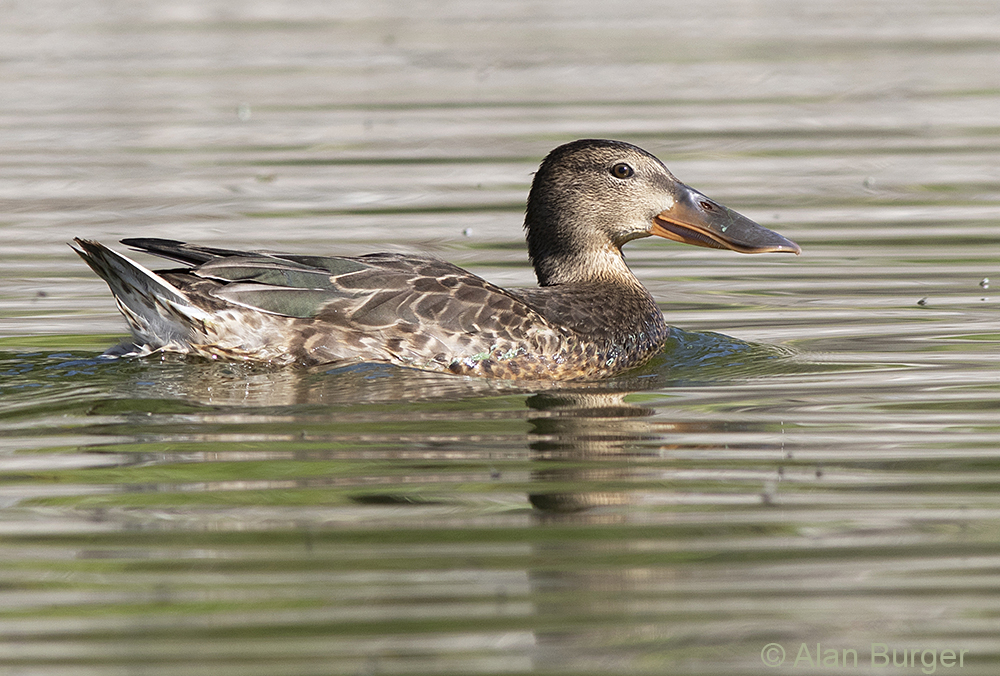
There is no mistaking the magnificent snoz of a Northern Shoveler. This looks like a juvenile bird. © Alan Burger
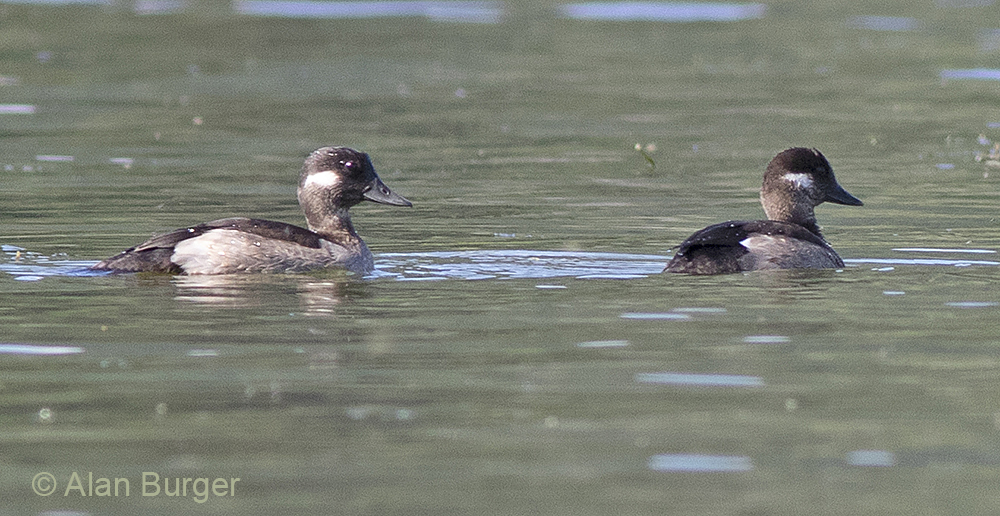
Buffleheads – a few of this species might be breeding on Mamit Lake. © Alan Burger
Paddling along the shoreline also gives one some good views of land birds. The bushes and rushes bordering the lake are full of sparrows, warblers, flycatchers, wrens and others. Along with those birds I also encountered their predators – Sharp-shinned Hawk and Merlin.
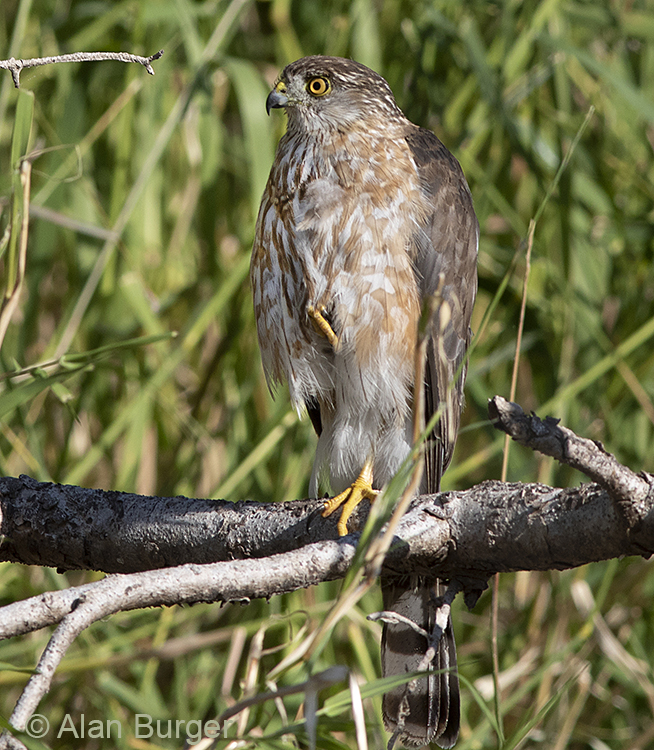
This Sharp-shinned Hawk was hunting small passerines along the lakeshore on 5 August 2020. © Alan Burger
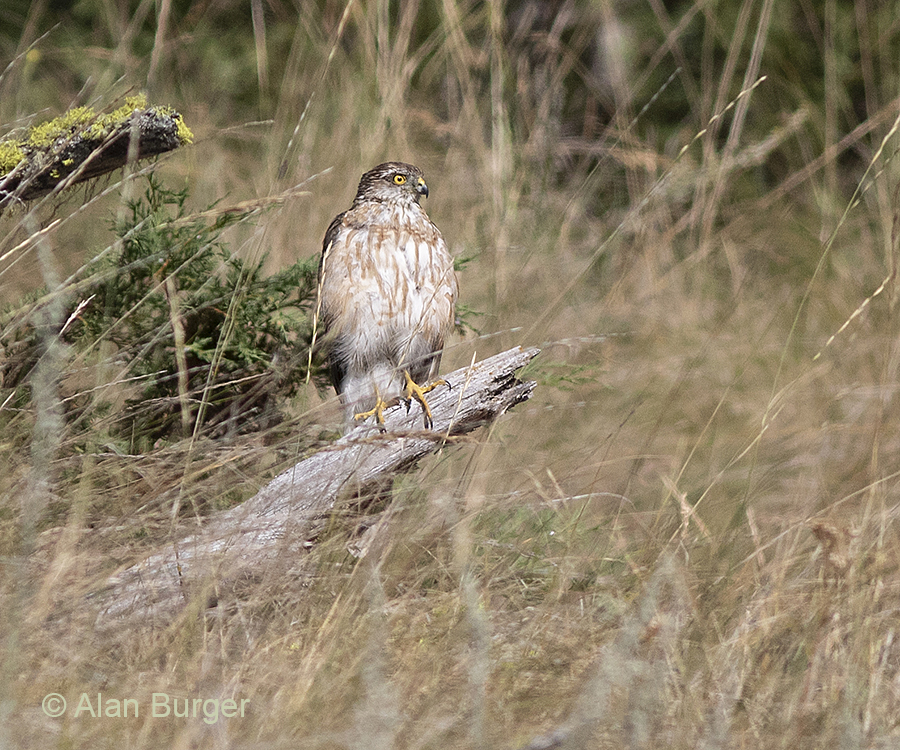
Probably the same Sharp-shinned Hawk, photographed here on 13 August 2020. © Alan Burger
Mamit Lake is a popular fishing spot for anglers, year round – ice fishing is very popular in winter. So too with fish-eating birds when the lake is not frozen over ……
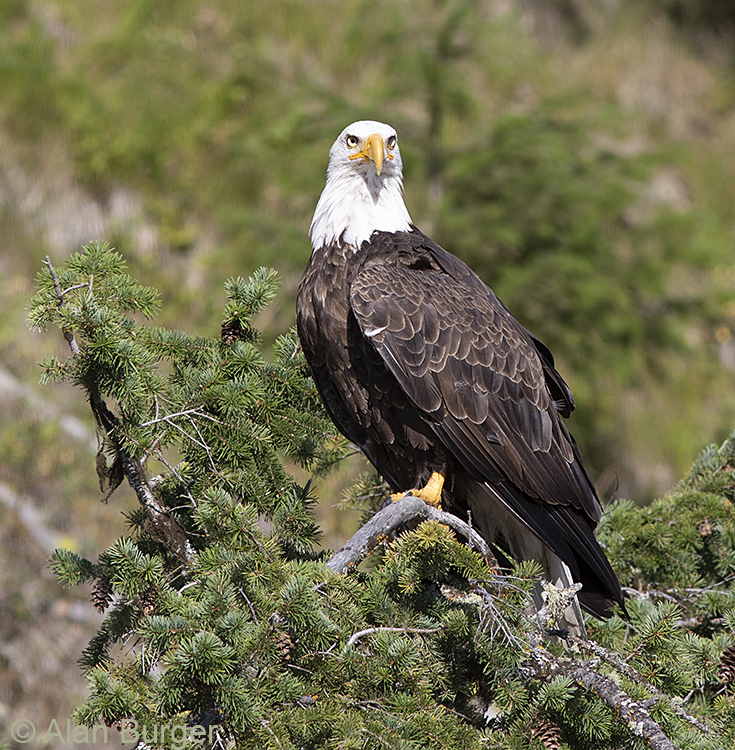
Adult Bald Eagle. © Alan Burger
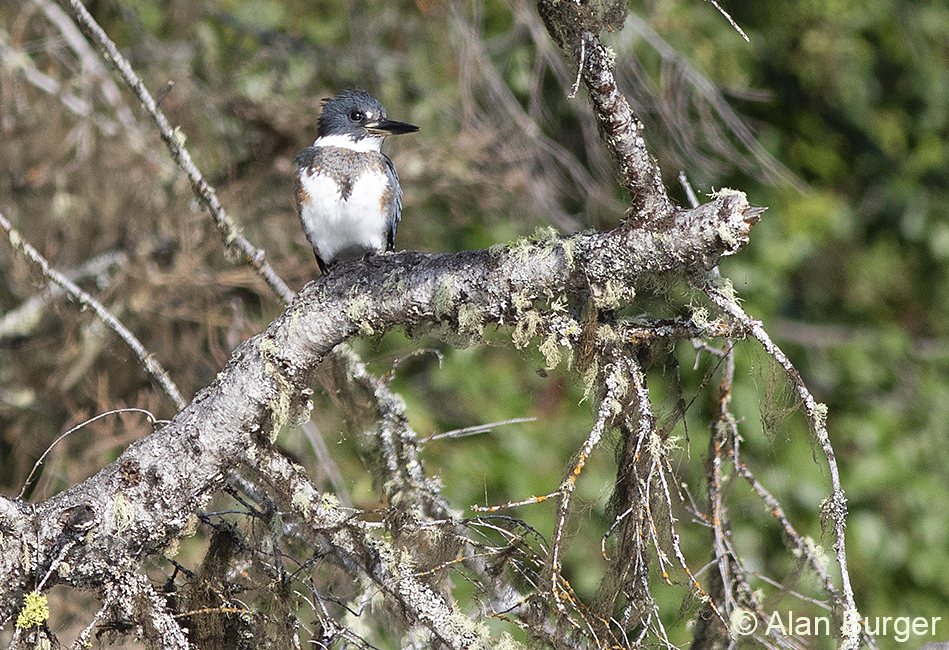
Belted Kingfisher female. © Alan Burger
For several weeks a group of American White Pelicans makes Mamit Lake their fishing ground. These are non-breeding birds. The only breeding site in B.C. is Stum Lake which is over 200 km away as the pelican flies. Many of them are moulting during their local visit and white feathers decorate the little rocky islets on which they spend much of their time.
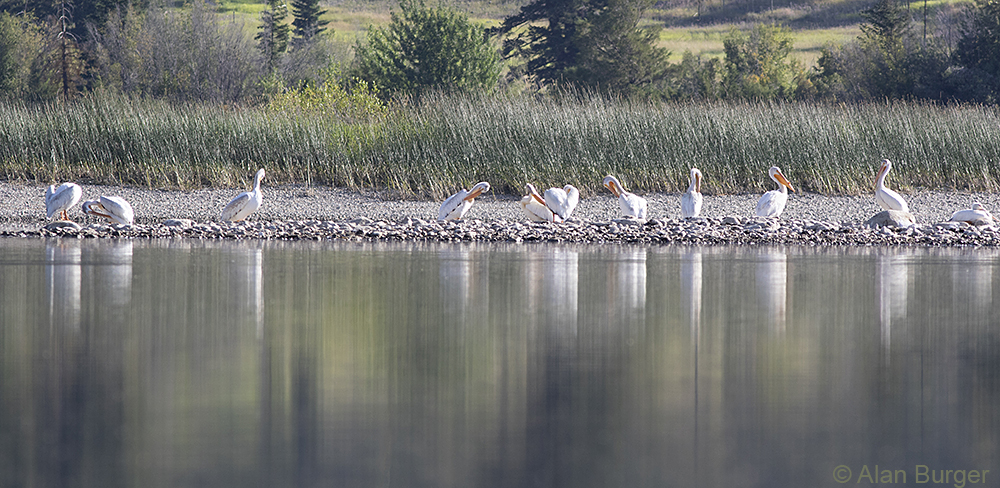
American White Pelicans on Mamit Lake. © Alan Burger
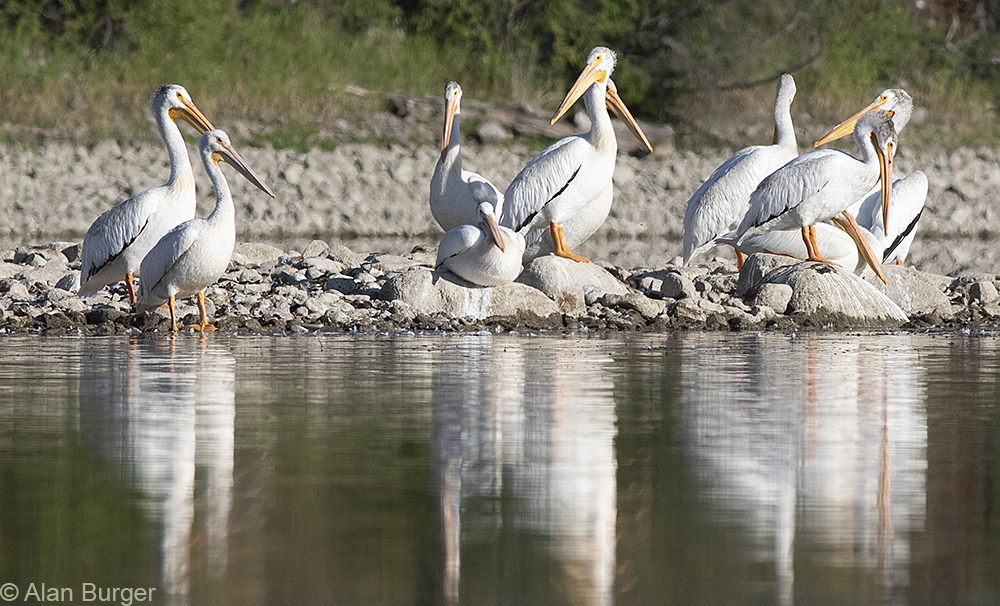
American White Pelicans roosting on a small rocky islet in Mamit Lake. Notice that most of these birds have grey on their heads, indicating that they are immatures. © Alan Burger
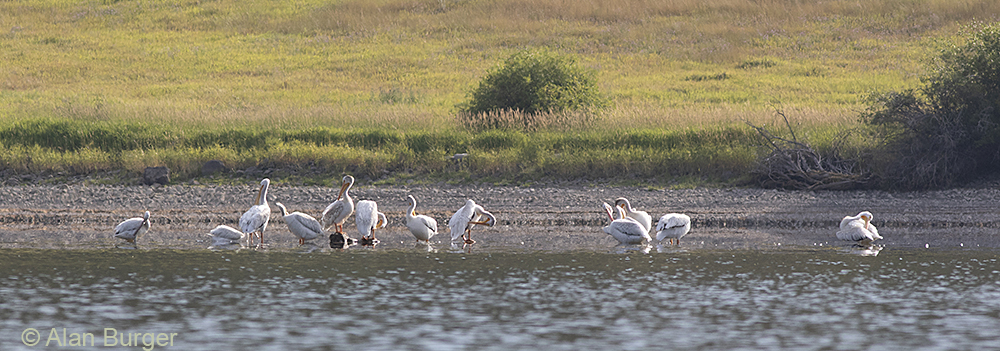
American White Pelicans. The birds are moulting and spend a lot of time preening. © Alan Burger
All photos taken with a Canon 7D Mark II with a Canon 300 mm EF L F4.0 lens.
To see bird checklists from Mamit Lake click here – eBird Mamit Lake

Hi Alan. Great to have met you at the Nest for the school reunion.
Your photography is exquisite, so sharp and clear, showing the details of all their features. We thoroughly enjoyed looking through the display.
Congratulations on excellent work.
Regards
David and Isolde